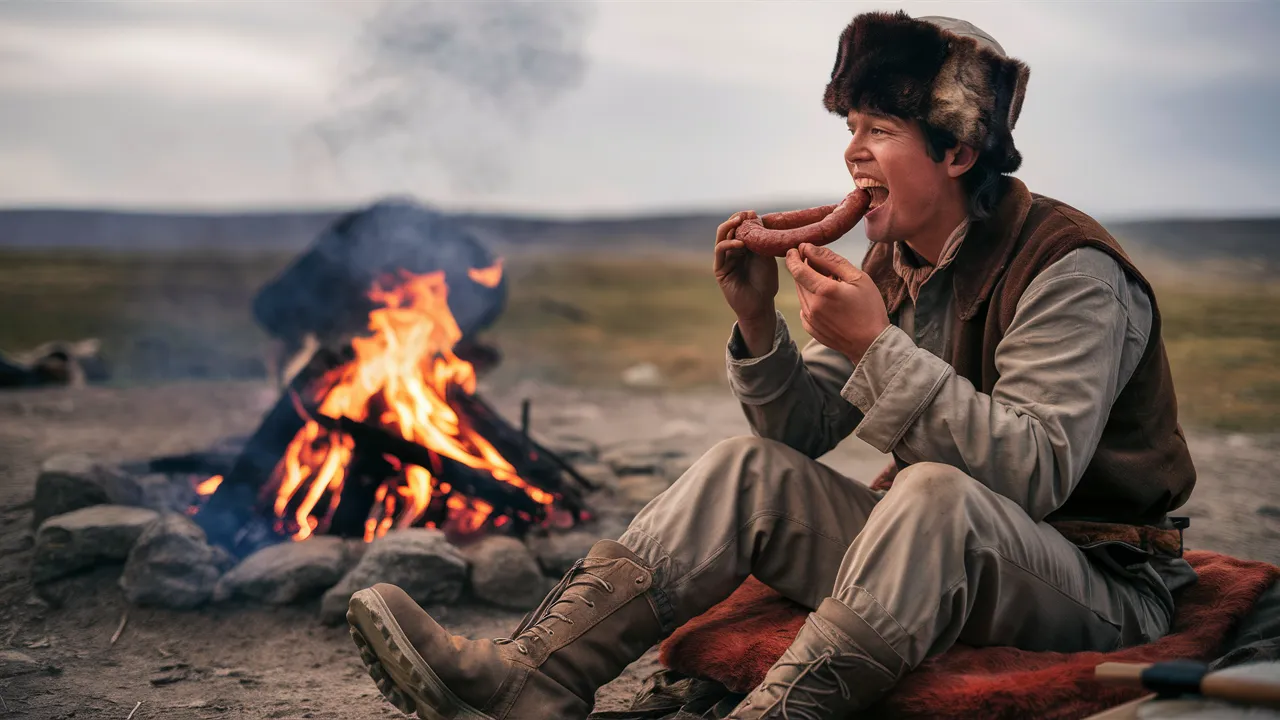6 Bizarre Foods Eaten by American Pioneers We Couldn't Stomach

As they journeyed across the untamed American wilderness, the pioneers had to get resourceful to avoid starvation. This meant supplementing their dwindling rations with some truly bizarre and unappetizing "food of the land." Here are 7 of the strangest foods consumed by resilient American pioneers:
6. Prairie Boudin (Bison Intestine Sausages)
When bison were plentiful, pioneers made use of every part of the massive beast - including the intestines. Prairie boudin were sausages made by stuffing bison meat and blood into stomach casing tubes.
The rich blood sausages could be smoked and dried to cure them for preservation on the trail. While revolting by today's standards, these iron-rich boudin links were a calorie-dense food source when hunger loomed. Native tribes taught pioneers to waste no part of hunted animals.
5. Hardtack (Simple Bread Rations)
A pioneer staple ration was hardtack - a simple cracker made by baking flour, water and sometimes salt into rock-hard biscuit "breads." While barely palatable when fresh, hardtack could stay edible for years if kept dry.
As pioneers depleted fresher foods, hardtack comprised more and more of their meals, eaten plain or crumbled into milks or stews to soften its sawdust-like texture. The tooth-breaking biscuits were cursed by many, but their longevity made them vital sustenance on overland treks.

4. Leavened Yellowjacket Bread
In a crafty display of making do, pioneers learned from Native Americans to bake yellowjacket nest combs into breads. The wasp nests acted as natural yeasts to help the dough rise.
While the thought of eating insect hives seems abhorrent today, this unusual leavening technique made the best use of foraged ingredients when supplies ran low. Eating wasp young and all likely added protein. For starving pioneers, few food sources were off-limits if they could satiate hunger.
3. Roasted Prairie Dogs
Native tribes taught pioneers that the ubiquitous prairie dogs scurrying underfoot were an expedient food source. Prairie dog meat was roasted on spits or boiled to provide nourishment when other proteins were unavailable.
While certainly no gourmet meal, eating these rodents in a pinch gave pioneers precious calories, fat, and protein to sustain their grueling journeys westward. Like many wild creatures consumed on the trail, an open-minded palate was key to survival.
2. Bison Bone Marrow Gruel
When food stores dwindled, pioneers boiled bison bones to extract nutrient-rich marrow fats and oils. The rendered fats could be spooned from the boiling pot as gruel or used for cooking fuel.
The calorie-dense bone marrow helped pioneers get vital energy during lean times. While drinking warm animal fats straight may seem unappetizing, it showcased the use-it-or-lose-it resourcefulness forced by frontier living. No part of an animal went to waste.
1. Cooked Prairie Plants and Weeds
When meat ran out, pioneers turned to foraging prairie flora like prairie turnips, prairie potatoes, cattail roots, and even dandelion greens out of desperation.
While certainly not as satisfying as ample meat and wheat stores, these roasted and boiled plants allowed pioneers to stretch their provisions until civilization could be reached. An openness to eating wild vegetation was essential when all else failed. Ingenuity often meant the difference between life and starvation.
On the long and arduous journeys toward a better life, American pioneers showed true grit by stomaching some incredibly bizarre foods to fend off hunger and survive. From bison organ meat to roasted rodents, nothing was too unappetizing if it could relieve gnawing starvation on the trail. Eating these "delicacies of desperation" highlighted the self-sufficiency and hardiness of the frontier forerunners who helped blaze the trails westward.
